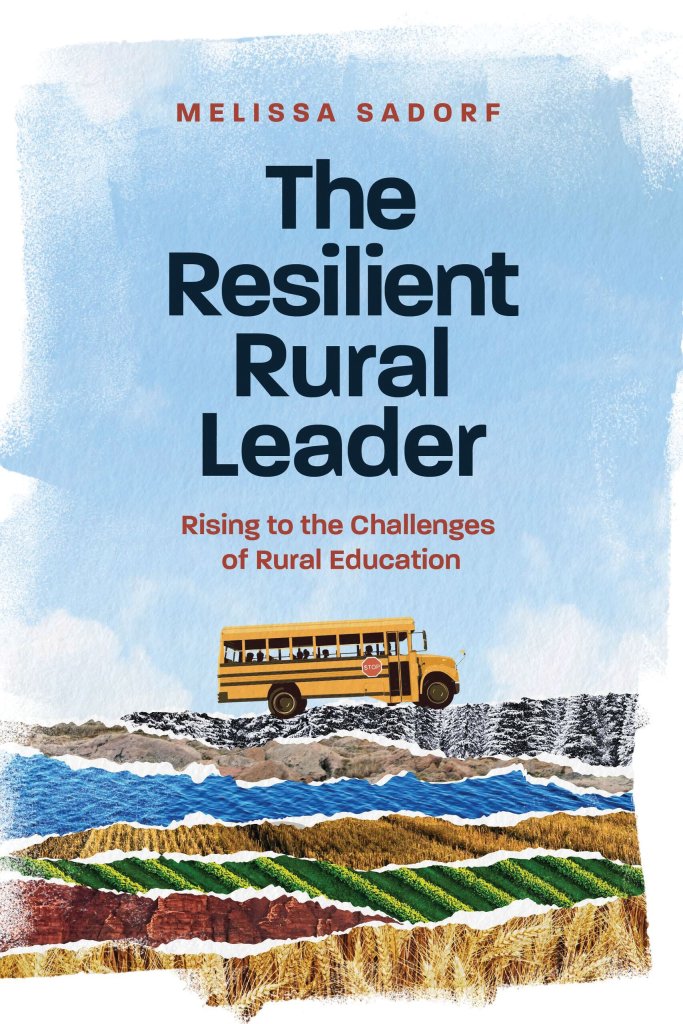Thriving as a Rural School Leader
Rural administrators should identify and reach out to the people most interested in engaging and supporting their school communities.
Your content has been saved!
Go to My Saved Content.There is an expectation in a rural school community that the principal be highly visible and widely available. Engagement in local activities and happenings goes a long way to establishing trusting relationships, which are key to success. Principals can expand their efforts not only by being present during noninstructional hours, but also by encouraging active parent participation in school events.
Being strategic about visibility is worth considering. My board president was happy to share a list of people I needed to get to know within my first few months in the Stanfield, Arizona, community. I needed to consider not only who the school supporters were but also who the detractors were. Which longtime residents held sway in the community? Who could, and would, undermine what was being done? Knowing who influenced the community’s goals and priorities—and how they exerted that influence—was essential to my work as a new leader in the community.
For example, getting to know the business owner next to the school campus was extremely beneficial. He owns several planes and does crop spraying for the local farms. Right after I started, a very rainy monsoon season resulted in an explosion of mosquitos on campus and an epidemic of mosquito-bitten students. The very supportive business owner was able to address the issue quickly with a weekend pesticide application at no cost to the district. He continues to be available for these services as a result of that relationship.

As different community members are introduced or made known to you, place them in one of four categories to determine your priorities for establishing contact and building relationships. Those with a high level of community influence can either be supporters of the school or detractors, as can those with a low level of community influence. To maximize your visibility and time, start by connecting with those community members in the high influence, high support category.
School leaders new to a rural community experience both professional and personal transition. While it might take time to establish relationships with community members, these relationships are vital to a successful tenure. Starting your role with open communication and visibility and taking the time up front to get to know the community, its history and key citizens, and its values and goals will pay off in the long run. In the school setting, make an effort to get to know your students and staff, a process often made easier in a rural setting where buildings contain fewer people.
Principal Sam Hess of Mill Street School in the Orland Unified School District in California shared an introduction strategy that he used when he first arrived in his district. He recorded a quick video introducing himself to staff and the community and asked them to set up a time to meet with him one-on-one once he finalized his move to his new home. Even a brief visual like this can start you on the path to establishing communication.
Your first task is to determine which stakeholders you need to reach out to. Stakeholders are any groups or members of the community who either have an interest in the school or are involved with or affected by what happens at the school. To help identify who is a stakeholder, answer the following questions:
- Who has an interest in the function and progress of the school and district?
- Who has a vested interest in the students and families the school serves?
- Who has something to contribute to the school, whether tools or information?
- Who already has a solid understanding and is supportive of what is happening within the school or district, and what should they know to maintain that support?
- Who is a detractor of the school or district, and how much information do they have about what the school is doing?
- Who are the different stakeholders and groups within the community established as needing to be involved?
- Who is missing that needs to be brought on board?
Once you identify potential stakeholders, be strategic about your engagement by prioritizing who you will speak to first. A framework shared by the Reform Support Network will help to guide your engagement with almost any community-based stakeholder along a continuum from inform to inquire to involve and then to inspire.
1. Inform. Use a variety of platforms and methods to provide information to the school community and all stakeholders. These can include the school website, social media, videos, presentations, and newsletters.
2. Inquire. Gather feedback from the school community regarding changes to programming, policies, or procedures. Use tools like surveys, focus groups, or listening sessions. Include all stakeholder groups in the inquiry to gain an understanding of diverse perspectives.
3. Involve. Establish opportunities to work with key stakeholders for two-way communication in a variety of groupings. These might include parent-teacher organizations (PTOs), a school site council, and advisory groups made up of business, civic, and faith-based leaders. All stakeholder groups in the community should have representation and involvement.
4. Inspire. Work to bring in the voices of a large coalition from the community to increase the number of stakeholders who fully understand any change initiatives. Inspire these stakeholders to actively solicit support from the community at large so that they become invested in the proposed changes.
Getting to know the community and its stakeholders is vital to creating an open line of communication that can facilitate connections and lay the groundwork for support for change initiatives that might need to be considered. Here are some key points to keep in mind:
- Find out how the community wants to be engaged. In Stanfield, a large number of people do not have broadband internet access. Therefore, while we do use social media, we also text community members to communicate information. How did we know this was their preferred method of contact? We asked through a survey! A simple survey is a great way to ensure your communication is targeted in a way that involves the largest number of community members possible.
- Be transparent about what is happening, and be consistent about the message. If there is a way to either livestream or record meetings for later viewing, do so. Engagement, especially across a large geographical area like many rural communities, should not be restricted by the meeting location.
- Do background research to understand the full scope of the issues, including what has been tried, what outcomes were gained, and who was involved. The more detailed knowledge you possess, the more focused your conversations with stakeholders can be. Know what questions need to be answered or addressed.
- Use existing structures when possible rather than creating new ones. If parent groups like PTOs or site councils already exist, start with them, as they are already invested in the work of the school. If an ad hoc group needs to be created down the line, members of the group will understand why and will be more likely to accept any outcomes or decisions.
- Use plain language when talking about the school, programs, or other aspects of the school. If necessary, create a handout with jargon words defined.
- Listen and allow all to contribute before giving an opinion or a recommendation. Especially when the support of stakeholders is important, allowing them to voice their input makes the process and its eventual outcome more robust and relevant.
- Consider any special needs the community might need met to fully engage. Do you need to use an interpreter (spoken, close-captioned, or signed)? Are there ADA (Americans with Disabilities Act) requirements to address?
- Follow up with consistency. In any stakeholder engagement, follow-up is essential. Not only does it help keep everyone informed on outcomes and timelines, it also shows that you value stakeholder input. People who know their participation matters are more likely to continue to engage with the school and its leader. Use a variety of platforms (e.g., social media, website, newsletters) to share the outcomes of your engagements.
From The Resilient Rural Leader: Rising to the Challenges of Rural Education (pp. 54–57), by M. A. Sadorf, Arlington, VA: ASCD. © 2024 by ASCD. Reprinted with permission. All rights reserved.
